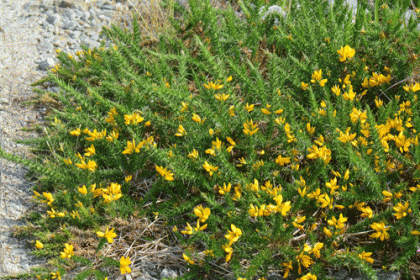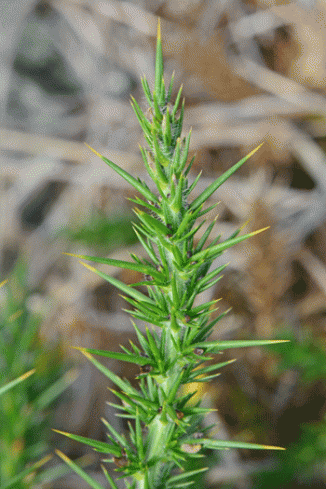Not as common as Gorse – which is also known as Furze or Whin – Western Gorse is more frequently found in the east, south-east, south, south-west and in parts of Connaught, whereas Gorse is widespread throughout Ireland. Western Gorse, which is also known as Autumn Gorse, is an evergreen shrub which tends to grow on mountains and heaths and is found at a higher altitude than Gorse. It is a far smaller shrub, only growing to 1 metre and is more delicate. There are several other differences:
- the spines (which are modified leaves) on Gorse are deeply grooved, those on Western Gorse are only slightly grooved;
- the flowers of Gorse have bracteoles which are 3-5mm long and at least twice the width of the flower stalk, at the bases of the calyx;
- the flowers of Gorse are bright yellow, those of Western Gorse are deep yellow; the flowers of Western Gorse have tiny bracteoles which are 0.5mm long and 0.6-9.8mm wide;
- the calyx in Gorse has spreading hairs, the calyx in Western Gorse has appressed hairs (pressed closely to the calyx);
- Gorse blooms throughout the year, Western Gorse blooms from July to September.
- Gorse has a coconut scent, Western Gorse does not.
- Gorse has a blue-tinge in its foliage whereas Western Gorse is a good strong green.
Western Gorse is a native shrub and it belongs to the Fabiaceae or Pea family.
I came across this shrub in Co Mayo in 2014 where I photographed it.
If you are satisfied you have correctly identified this plant, please submit your sighting to the National Biodiversity Data Centre




